Trading ETFs: Gaining an Edge with Technical Analysis
$14.20
| Author(s) | |
|---|---|
| Pages |
204 |
| Format |
|
| Publication Year |
2012 |
Trading ETFs offers an updated version of the definitive guide to this vital part of the capital markets. It contains numerous new examples of the techniques that author Deron Wagner uses in selecting the most timely ETFs to trade and underscores the core insights of his trading discipline “trade what you see, not what you think.”
Author’s Introduction:
Unlike most books on exchange-traded funds (ETFs), this one offers you strategies based on technical analysis, not fundamental analysis. When I began trading professionally in 1999, before ETFs took the market by storm, people tried to convince me of the merits of studying fundamental factors, such as price-to-earnings (P/E) ratios, balance sheets, earnings growth, and news events.
I’ve always believed that a deep knowledge of these items is theoretically important, but fundamentals seem to have a direct impact only on the long-term direction of a stock. In the short to intermediate term, the correlation between the actual price action of an ETF and its fundamentals is rarely signifi cant. Technical analysis, however, tells me everything I need to know about the odds of a trade continuing in the current direction or reversing.
Because an ETF consists of a diverse plethora of individual stocks, using fundamental analysis of the underlying stocks to predict the price movement of the actual ETF brings less than satisfactory results. The only way to have a greater than 50–50 chance of predicting the short- and intermediate-term trends of ETFs is through sound technical analysis.
This is why my hedge fund, Morpheus Capital LP, is one of the few professional hedge funds that primarily bases its investment and trading decisions on the technical analysis strategies I share with you in this book, rather than more traditional fundamental analysis and “long-term” investing. Although the techniques presented here are designed to work ideally with ETFs, individual stock traders can successfully apply the same techniques.
Contents:
- Why Use Technical Analysis with ETFs?
- Major Types and Families of ETFs
- The Top-Down Strategy
- Finding Indexes with the Most Relative Strength
- Selecting the Best ETFs
- Supplementing the Basics
- Strategies for Entry
- Strategies for Exit
- Ten ETFs Bought Long
- Ten ETFs Sold Short
- Tailoring Your Approach
- Additional Pointers
Trading ETFs: Gaining an Edge with Technical Analysis By Deron Wagner pdf
28 reviews for Trading ETFs: Gaining an Edge with Technical Analysis
Clear filtersOnly logged in customers who have purchased this product may leave a review.



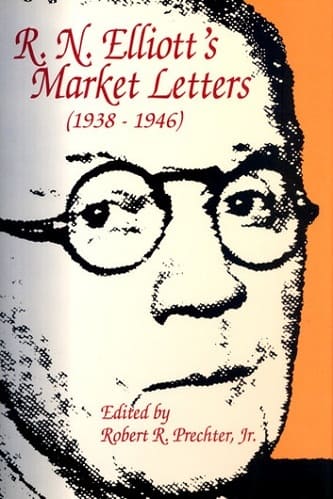

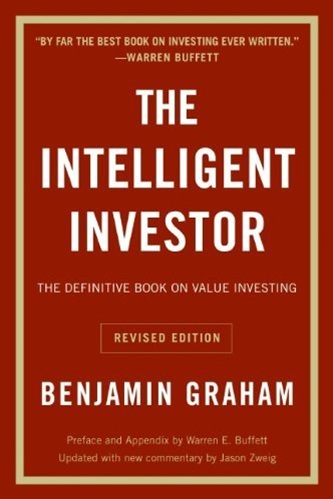
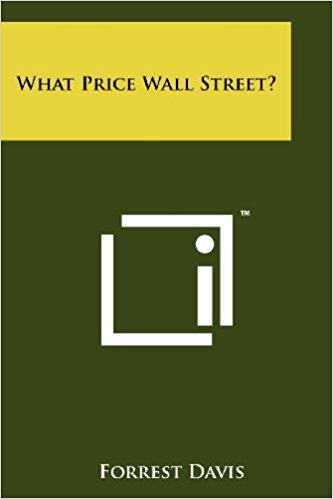
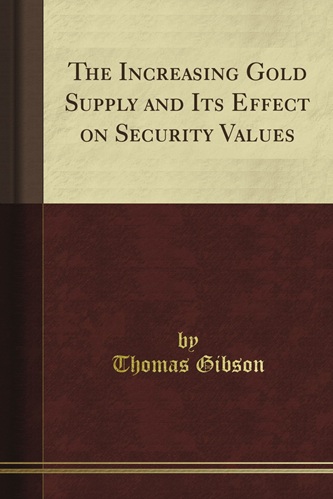
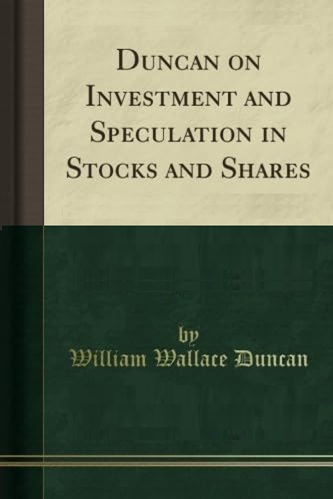
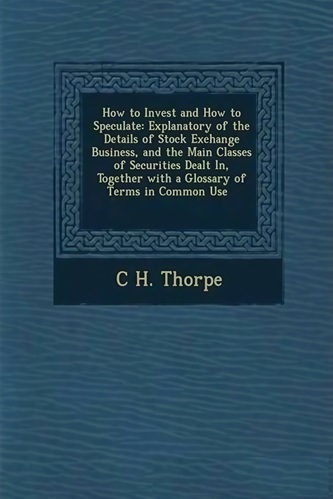
Kinley Moreno (verified owner) –
Good for beginners
Addilynn Weaver (verified owner) –
Well written book that provides a usefull working guide for trading ETFs. The author explains his strategy and technical analysis clearly so it maybe easily understood.
Javier Wang (verified owner) –
Deron Wagner desrves a great deal of credit for having the courage to break the mold on Wall Steet. A wonderful book for experienced investors.
Lilliana Reilly (verified owner) –
This is a great read. His use of the relative strength concept and his
obvious chart reading skills really help, especially in this market. Being able to get early indication of institutional movement is enhanced.
This style is evident in his newsletter services as well. Great job.
Zoya Pollard (verified owner) –
This is a great book to learn about ETFs and how to trade them. Deron Wagoner shares his knowledge and outlines a concise methodology for trading. Definitely a reference book you will continue to profit from.
Ophelia Bates (verified owner) –
Finally a trading book that describes in detail how to successfully use a top-down approach to improve your trading results. The author carefully explains how to find the strongest indexes, then to use that information to find the strongest ETF in that index’s area, then he includes actual detailed step-by-step trades in that ETF.
This book was well thought out and well written.
Ethan Schwartz (verified owner) –
As a 40+ year investor with a vast library of Technical Analysis books, we find Deron Wagner’s new ETF study a gem! With concise descriptions, charts and examples, Deron describes his tested methods for successfully trading ETFs.
Carlos Galindo (verified owner) –
Deron Wagner has written an easy to understand book about making money and protecting it in up, down and sideways markets. This book is a must read for anyone who is interested in a simple Technical way to trade the market. Thanks Deron for taking the time to write the book.
Kaydence Rosario (verified owner) –
This is an excellent book! A must read. I never wrote book reviews in the past but I felt compelled to write one because this book details a methodology that I can believe in giving me the confidence needed for successful trading. In addition to reading this book, make sure to subscribe to Wagner Daily, Deron’s newsletter. It is a great complement to this book and it is a real time application of all his trading methodologies.
Myles Beltran (verified owner) –
I thoroughly enjoyed this book. I actually read it cover to cover twice, and I use it in my trading. Its the kind of book that should be used as an on-going reference work. Deron combines great educational content on technical analysis and trading set-ups with his actual trades. There’s a lot of content and experience packed into these pages that can really help a novice and/or experienced trader/investor alike. In today’s volatile markets, ETFs offer a great trading vehicle. Deron’s method is very easy to understand and makes for an implementable method for most investors. This book is an instant classic in my opinion.
Jad Trejo (verified owner) –
The book explains Deron’s disciplined process for trading ETFs. We are talking about trading, not investing. There is a difference. For a long term investor, the book provides some good background on ETFs, their growth and use among both private and institutional investors. The strength of his strategy is the understanding of relative strengths of ETF price action versus the overall market and versus each other. That’s just the beginning. I was interested in subscribing to his service but thought it might be a good idea to read his book. I’m glad I did. Monitoring supply and demand are the underpinnings of successful trading. He provides real-life examples of trades that worked and trades that didn’t. I highly recommend this book and his website for sophisticated traders and investors.
Ellis Hogan (verified owner) –
This book is a must read if you are interested or already trade ETF’s
This book provides valuable insight in how to spot market leaders and market laggards in addition to exactly how volume is a leading indicator. Something my finance teachers failed to cover so clearly and precise as Daron has set forth in this book.
If you read this book I guarantee that you will become a better trader!
Excellent Info for the Beginner…first off explaining all of the fund family’s attributes. Continuing into more advanced technical analysis that I particularly enjoyed. It is a recommended read to all my fellow traders and I would not understand ETF’s the way I do now with out the help of Mr Wagner’s excellent thought out and clear examples of the strategies he discusses through the latter chapters.
I recommend for all investors whether just starting off and you simply would like to know more about ETF’s, to the advanced investor who can appreciate the in depth technical analysis further into the book.
A+
Tucker Chang (verified owner) –
If you trade ETF based on technical analysis (chart reading), this is a book that you must read. I’ve been trading ETF for almost a year. As I’m trying to develop my own trading rules, and strategies, how lucky I am to be able to read a great book like this. It reinforces what I’ve already known, and completes what I don’t know. To me, a successful trading system must clearly define all the following issues, and this book covers them all:
1. How to choose a trade. The book presents a top-down strategy based on relative strength, which is a very reliable indicator.
2. When to enter a trade. The book shows you how to enter on either pull back or breakout.
3. When to exit a trade. The book shows you how to exit a winning trade, as well as losing trade.
4. Position size. The book shows you how to calculate the position size based on volatility of the ETF so that the maximum risk of each trade is the same.
Armed by what I’ve learned from this book, I hope I am on the way to trading with consistent profit.
Dylan Gonzalez (verified owner) –
This is an easy to learn trading strategy, similar to the style I already use.he covers several time frames from 15- 60 mins to daily and weekly charts (your choice) though I never used moving averages or traded etf’s (preferring simple price action)this is a workable strategy and I will implement it into my overall trading plan.
Ruben Huff (verified owner) –
Mr. Wagner cooks up a delightful winning recipe with a clear exposition of ETFs marinated with a perfect blend of technical indicators. This book would satisfy the most discriminating palates of readers interested in trading any securities, not just ETFs, as long as they are open to understanding and using Technical Analysis.
Exchange Traded Funds (ETFs) look and feel like mutual funds but trade like individual stocks. Since ETFs are synthetic instruments (made up of several underlying stocks or indexes) their average daily volume is largely irrelevant in determining their price and liquidity. Wagner provides a `logical step-by-step process that enables the reader to easily master ETF trading using technical analysis’.
In Chapter 1, Wagner gives an excellent review of the history and growth of ETFs. I agree with Mr. Wagner that `the beauty of his top-down strategy in selecting and trading ETFs lies in its simplicity.’ First determine the broad market trend (up or down). Second, find the indexes with the most relative strength. Third, find the ETF with the most relative strength for the promising index. Fourth, determine the Long/Short position for the selected ETF that is likely to out-perform the market. Fifth and last, determine the entry timing most likely to out-perform the market.
Wagner cautions that his terminology `Relative Strength’ is not the same as the standard RSI (Relative Strength Indicator). Since Wagner compares how one index or ETF acts in relation to the broad market, `Proportional Strength’ may be a more appropriate terminology instead of Relative Strength, with the added benefit of avoiding any possible confusion with RSI.
Wagner’s discussion on `Analyzing Volume’ is interesting but leaves me a bit unsure, perhaps due to my naivete. Wagner asserts that volume is a leading indicator but does not seem to distinguish between volume causing price to rise vs. volume causing price to fall. I have found that OBV (On Balance Volume, developed by Joseph Granville) is an useful indicator to gauge the strength of a market. If price closes up, the current bar’s volume is added to OBV, and if price closes down, it is subtracted. Thus OBV is an indicator that depicts the flow of volume into and out of a security. It either confirms the quality of the current trend or warns of an impending reversal. I am eager to be convinced that Volume is a leading indicator; perhaps Mr. Wagner would elucidate this in a future edition of his book so a reader like myself would be convinced.
Wagner’s discussion on `Supplementing the Basics’ has a brief but interesting reference to Inverse Sector Relationships: If institutional money flows into one sector (as determined by Relative strength and volume) then it must be flowing out of another sector. This can be useful in selecting sectors for long and short trades. Regarding Fibonacci price retracement, Wagner’s discussion is a bit sketchy. Wagner could have referenced other authors (such as Constance Brown ) who despite dwelling on the almost mystical power behind the powerful Fibonacci ratios, provide an excellent treatment of the subject for stock market analysis.
While discussing strategies for entry, Wagner elucidates `overhead supply’ in crystal clear terms, observes how Market Makers and specialists go for `stop hunts’ to scoop up shares at the best price, and educates novice traders why buying ETFs at new highs is worth considering.
Wagner’s discussion of strategies for exit includes the most concise and clear elucidation of Resistances to check. Wagner asks: Are the 20-day and 50-day MA’s overhead? Is there Fibonacci resistance (50% and 61.8%)? Is there Trendline resistance? What about prior highs that have formed horizontal price resistance? Moreover, look for resistance levels in different time frames: 60-minute, daily, and weekly charts. In addition, pay attention to the length of consolidation that marked the prior high ( the `thickness’ of Resistance). While many of Wagner’s observations are useful, this one is worth its weight in Gold: `Once I began using trailing stops, my profitability shot through the roof `. He even gives pointers on how not to fall prey to `stop hunts’ by specialists and market makers.
Wagner illustrates the lessons he is trying to impart to the reader with Ten long and Ten short ETF trades.
Most authors would have stopped here; but Wagner excels himself by adding a chapter on `Tailoring Your Approach’ and another on `Additional Pointers’. These final chapters are strewn with several useful ideas even the average reader can benefit from.
In conclusion, this book (although titled `Trading ETFs’) will benefit immensely traders of any securities, not just ETFs, as long as they are open to understanding and using Technical Analysis.
Cali Rodgers (verified owner) –
Great book for people that are about to start trading for the 1st time… a must buy…
Karsyn Sparks (verified owner) –
This is the book I am looking for to get me understanding the ETFs and how to trade them. Very informative.
Kathryn Maldonado (verified owner) –
I bought this book b/c the author’s strategy fits with my strategy and b/c of excellent rating from other reviewers. The book is a must for someone who wants to learn TA. Great examples are provided throughout the books.
Drake Bond (verified owner) –
ETF’s puzzle me. So I purchased this book with the idea that I would certainly get a better insight into ETF’s by studying some methodology regarding buying and selling ETF’s. I describe the writing style format of “Trading Ets’s” as being very similar to Dr. Alexander Elder’s book; “Entries & Exits – Visits to 16 Trading Rooms.”
The bulk of the book is devoted to very detailed narrative explanations, and interpretations, of the daily rise and fall of ETF price charts. I feel that the interpretations are very subjective. Simply put, I don’t have the desire, patience, or self-discipline to be a day trader.
Kailani Knox (verified owner) –
This is the best book I have read on the subject and is the second book I have read by Wagner. Wagner’s other book, “Sector Trading Strategies”, was good but “Trading ETFs” was excellent. He has an excellent understanding of these markets and it is presented in an organized and well thought out manner. However, it is a lot of material and can be read several times, getting more out of it each time it is read. I look foward to reading any other books that he may write.
Rosalyn Hebert (verified owner) –
In my opinion, this is the best book for beginning technical analysis. Murphy’s “Technical Analysis of the Financial Markets” is good and comprehensive, but like so many others it doesn’t tell you enough about how to use the great variety of TA tools to make money. Wagner’s book is beautiful in that he sticks with the most basic tools–largely trend analysis–and gives a great number of actual examples from his own experience. He teaches the judgement that is not taught enough in other books. The writing is excellent and he really seems interested in helping you make it work. Don’t worry about the apparent limitation to ETFs. The techniques work just as well with stocks.
Corinne Holloway (verified owner) –
Great book for understanding how ETFs work in the market (as opposed to stocks) and technical analysis for them. The technical analysis, for those already familiar with technical analysis, is also complete and in depth and much of it is what can be used for trading stocks, so the insights here will help trading both stocks and ETFs. He does differentiate what applies to ETFs. He also has some very interesting “learned through experience” insights to trading especially in in the first hour of the market open, which has frustrated me. His insights for setting stops appropriately so as to not get swept out prior to a reversal is also insightful.
I thought the book was very logically laid out and well written.
Guillermo Maxwell (verified owner) –
Pros
– good information on ETF’s
– a trading strategy backed up by explanations and examples – charts with winning and losing trades
Cons
– not very well laid out, important information is concealed within the body of the book, I would have liked a more clear and concise approach.
– lacked some explanations of the basic principles;
– the chart examples are not always easy to follow.
All in all this book could have been much better simply with better layout and better formatted illustations. I think I will need to re-read it with a highlighter pen and some post-its
The content is good and the cons should not preclude you from buying the book if you are interested in trading ETFs be it on a day, swing or position basis.
Alvaro Haley (verified owner) –
Lots of ideas. Clearly presented.Well organized.
Mathias Villalobos (verified owner) –
I have been trading ETF for five years. I have read more than 10 books on investing and trading. There is only couple of them I liked. This one is one of them. Another two are Stan Weinstein’s Secrets for Profiting in Bull and Bear Markets and Nicolas Darvas’ How I Made $2,000,000 in the Stock Market. Of course, I also like Investing the Templeton Way, but it is for investment, not for trading. The most impressed content in this book was reviewed by many people. I do not want to repeat. Here I only want to stress one thing that many books did not mention and that gives me a lot of help. Buying breakout of 52 weeks or muti-year high can typically yield the greatest amount of profit potential. This book gives an excellent explanation. Also it mentions the risk of this strategy. This is also a great discussion.
I think this book is a much more deep discussion of Stan and Nicolas’s concepts and methods. I have learned a lot!
If you want to make money trading ETF, you must read this book.
Kyla Malone (verified owner) –
Deron Wagner,in Trading ETFs, has presented a very simple, logical and, I think, successful approach to trading ETFs. In a very readable and understandable style and utilizing numerous chart examples, Mr. Wagner describes how he goes about finding the highest probability trades, how he determines the optimum entry point, how he manages open positions, and how he exits positions be they big winners, breakevens, or losers.
He describes his approach as being a “top down strategy”. His first step is to determine the direction of the broad market trend; then, once the trend is determined, he finds those indexes that have the most relative strength or weakness compared to the major indexes; then he selects the strongest ETFs within those indexes (or weakest if going short); then he looks at volume for confirmation; and finally he uses one or more of several techniques to properly time the new entry into the selected ETF.
The one thing that I liked most about Mr. Wagner’s book was his use of clean and simple charts. He uses almost exclusively only two and sometimes three moving averages, draws simple trendlines and areas of support and resistance, and shows volume levels and averages. He does not “goop’ his charts up with additonal indicators such as MACD-Histograms, slow stochastics, and RSI. While these indicators are certainly very useful to many traders, Wagner’s plain, simple approach of looking only at price action and volume confirmation has a lot to be said for it.
Risk management and position sizing are touched upon only briefly but adequately and his comments about using trailing stops are most enlightening.
The two chapters describing case studies of 10 ETF’s bought long and 10 ETFs sold short are most useful in illustrating the use of Mr. Wagner’s various setups.
I have read Trading ETFs only once now but I am already looking forward to going through it again a second and third time. It is the type of book that you can only absorb only so much the first time around but pick even more pearls of wisdom on subsequent readings.
Needless to say, I recommend Mr. Wagner’s newest book highly.
Sutton Person (verified owner) –
A very sensible, clear, and practical book. Very well and clearly written. Once you have read a book like this and a couple of others, you don’t need to read any further. In my case it helped even more because I had studied Murphy’s Technical Analysis book earlier. So I got full mileage out of reading this (thrice over, cover to cover). It helped me refine and improve my strategies.
Jedidiah Garrett (verified owner) –
Why AT has to be so complicated? Congratz for the Wagner, it is an easy reading and fantastic book! I just love it